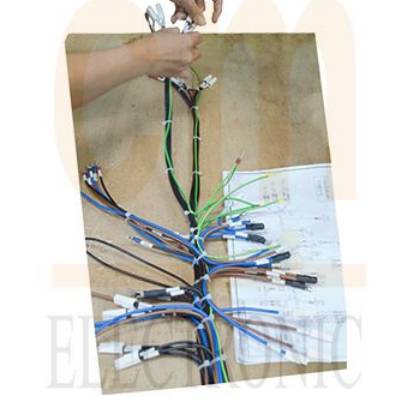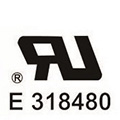What is the difference between wire harness and cable harness in american countries?

Understanding Wire Harnesses
Wire harnesses, also known as wiring harnesses, are assemblies of electrical wires or cables that are bound together using various methods such as straps, ties, or sleeves. These harnesses are meticulously designed and manufactured to organize, protect, and route electrical conductors within systems, machinery, or vehicles. Wire harnesses play a vital role in simplifying installation processes, enhancing electrical connections, and ensuring the reliability and longevity of electrical systems.
Key Characteristics of Wire Harnesses:
-
1. Electrical Wires/Cables:
The primary components of wire harnesses are electrical wires or cables, which may vary in size, gauge, insulation material, and color coding based on the specific application requirements.
-
2. Connectors and Terminals:
Wire harnesses often feature connectors, terminals, or plugs at each end to facilitate easy and secure connections to other components within a system. These connectors come in various types, including crimped terminals, soldered connections, or quick-disconnect fittings.
-
3. Protection and Insulation:
Wire harnesses are designed to provide robust protection and insulation for the enclosed wires or cables, shielding them from environmental factors such as moisture, heat, abrasion, and electromagnetic interference (EMI).
-
4. Customization and Assembly:
Wire harnesses are typically custom-designed and fabricated to meet the specific needs of a particular application or system. The assembly process involves intricate tasks such as wire cutting, stripping, crimping, soldering, and bundling, often performed using specialized equipment and techniques.
Exploring Cable Harnesses
While wire harnesses focus primarily on electrical wires or cables, cable harnesses encompass a broader spectrum of components beyond basic electrical conductors. Cable harnesses integrate various types of cables, connectors, and additional elements to meet the complex requirements of modern electronic and communication systems. These harnesses are widely utilized in industries such as telecommunications, networking, data centers, and audiovisual systems.
Key Characteristics of Cable Harnesses:
-
1. Multifunctional Components:
Cable harnesses encompass not only electrical wires or cables but also other transmission media such as fiber optic cables, coaxial cables, ribbon cables, or hybrid combinations thereof. This integration enables the transmission of diverse signals, including electrical, optical, or RF (radio frequency), within the harness assembly.
-
2. Integration of Components:
Beyond basic wiring, cable harnesses may incorporate additional components such as switches, sensors, relays, transformers, or passive electronic elements. This integration enhances the functionality and signal processing capabilities of the harness, enabling advanced features and functionalities within electronic systems.
-
3. Signal Integrity and Performance:
Cable harnesses are meticulously designed to maintain signal integrity and performance across all integrated components, ensuring reliable communication and transmission of data, power, or signals within the system. Rigorous testing and validation procedures are often conducted to verify compliance with industry standards and performance specifications.
-
4. Application-Specific Requirements:
Cable harnesses are tailored to meet the specific requirements of diverse applications, ranging from telecommunications infrastructure to audiovisual systems and industrial automation. These harnesses undergo thorough customization to address factors such as impedance matching, signal timing, noise reduction, or power distribution, thereby optimizing performance and reliability in their respective domains.
Differentiating Wire Harnesses and Cable Harnesses
While wire harnesses and cable harnesses share common objectives of organizing and protecting electrical conductors, their distinctions lie in the scope of components and applications they encompass. Wire harnesses primarily focus on electrical wiring and are commonly utilized in industries such as automotive, aerospace, and industrial machinery for electrical connections and power distribution. Cable harnesses, on the other hand, extend beyond basic wiring to integrate diverse transmission media and components, serving the complex communication and signal processing requirements of industries such as telecommunications, networking, and audiovisual systems.
Applications and Significance
Wire harnesses and cable harnesses play indispensable roles across various industries, contributing to the functionality, reliability, and efficiency of electrical and electronic systems. In automotive applications, wire harnesses facilitate the integration of electrical components, sensors, and actuators, enabling essential functions such as engine management, vehicle lighting, and onboard communication systems. Cable harnesses are instrumental in telecommunications infrastructure, supporting the transmission of voice, data, and multimedia signals over vast networks of cables and optical fibers. Similarly, in industrial automation and control systems, both wire harnesses and cable harnesses play pivotal roles in facilitating signal transmission, power distribution, and inter-device communication, thereby optimizing operational performance and productivity.
Summarize
In American countries, wire harnesses and cable harnesses are indispensable components in a wide range of industries, each serving distinct purposes and applications within electrical and electronic systems. While wire harnesses focus on organizing and protecting electrical wiring for basic electrical connections, cable harnesses encompass a broader array of components and transmission media to meet the complex communication and signal processing requirements of modern electronic systems. Understanding the differences between wire harnesses and cable harnesses is crucial for engineers, manufacturers, and professionals involved in designing, fabricating, and implementing electrical and electronic systems across diverse industries. By leveraging the unique characteristics and capabilities of wire harnesses and cable harnesses, organizations can enhance the reliability, efficiency, and performance of their products and systems, driving innovation and advancement in various fields of technology and industry.
➤ Our Quality Control









